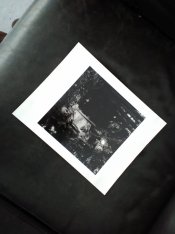I love FB, but I use RC. I occasionally print another FB just to remind myself of what it's like then go back to RC. My reasons (and these are purely personal) are:
1. Cost. RC is a bit cheaper, and warmtone is about the same price as the normal emulsion (this is Ilford multigrade). FB is about 50% more expensive for the normal emulsion and 100% more expensive for warmtone. I print a lot at 12"x16" and by the time you've got a decent size test strip, a work print and a couple of final prints, that's a fair bit of cash.
2. Flatness. At 12"x16", my normal easel bangs against the column of the enlarger and even then I can't get the full image onto the print, so I have to use a really cheap easel with a thinner margin that is not great at holding the paper flat, or just lay the paper on the baseboard. I find FB curls up at the edges, even under the easel, while RC lays completely flat.
3. Washing. RC washes and dries much faster. As I have to pack away everything after a darkroom session, the speed of washing and drying helps.
4. Flatness (again). I've tried most suggestions as to how to get FB to dry flat. Some sort of work for me, but there is always a wrinkle left that makes it hard to mount properly.
None of these are deal-breakers and can be overcome, and in the hand, you can't beat the feel of a FB print, it's crafted, not made. RC still feels a little plasticky, but I've printed up the same image in both FB gloss and RC pearl and put them both behind glass and I find it very hard to tell them apart, and I know what I'm looking at. So on balance, RC works for me. Not a great fan of RC gloss though, but that's personal too. Thank goodness we have all these options.







